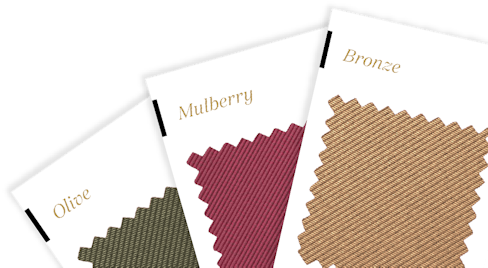Black Tie vs White Tie: Decoding Men’s Formal Wear

Whenever you’re invited to a fancy formal event, you’ll likely be expected to wear white tie or black tie attire.
But figuring out which one to wear can be challenging, and many people struggle to understand the precise differences between the two. Indeed, when it comes to white tie vs. black tie, there are many questions and complexities to deal with.
But that’s what this guide is here to help with. In this black tie vs. white tie comparison, we’ll explore what exactly these dress codes mean. We’ll also cover the similarities and differences between white tie and black tie.
So, without further ado, let’s drill into these two most formal dress codes.
The Basics of Formal Dress Codes
Before we get into the nitty-gritty of the white tie dress code vs. black tie, it’s important to understand the basics of dress codes in general. Dress codes have been used throughout the ages, whenever big events and special occasions occur. They serve a range of benefits, instructing guests on what to wear, while also setting the scene for the event.
There’s a whole spectrum of dress codes. At the lowest level, there’s the casual code, which allows guests to wear quite simple, comfortable attire. Then, at the very top are the formal codes, white tie and black tie. These codes are the most sophisticated and tend to be the strictest, with specific rules to follow.
When it comes to what does formal attire mean for a wedding, it typically refers to black tie, but white tie weddings are common for more traditional settings (such as royal events). And these dress codes tend to be selected for events that are particularly elegant and refined. Or, if the hosts are trying to establish a very sophisticated ambiance for their big day, they’ll ask guests to attend in black- or white tie.
What Is Black Tie?
Black tie is one of the oldest and most traditional dress codes, dating all the way back to the Regency days of the 1800s. It tends to be the universal formal dress code for events like weddings, galas, special birthdays, award ceremonies, nights at the theater or opera, and so on.
A traditional black-tie wedding suit always starts with a black-tie tuxedo outfit. Indeed, the tux is emblematic of the black tie dress code. Other essential elements of this dress code include black patent leather shoes, black evening socks, and the eponymous black bow tie. Let's not forget that your date has to follow this dress code too.
However, it’s worth noting that the black tie dress code, while formal, isn’t quite as strict as white tie. It does allow for some leeway in terms of what a man can wear, especially as fashion trends rapidly change between the years. Midnight blue suits, for instance, are a potential variation since they appear darker in artificial lighting than pure black silk or wool. Waistcoats and cummerbunds may also be worn, along with various accessories.
What Is White Tie?
So, since black tie attire typically equates to tuxedos, does formal attire mean tuxedo by default? Well, yes and no. The other big formal dress code is white-tie, and this one does include a tuxedo tailcoat. But, it also has other strict elements that differ from the typical tux. Thus, at white-tie gatherings, the typical male outfit is quite different from what you might see at a black-tie wedding.
White tie is considered the most formal of all dress codes. It tends to be used at the most exclusive and prestigious events around – the sort of events you would expect to find celebrities, politicians, or even royalty. However, anyone can choose to host a white-tie wedding or party, if they like. And, as long as everyone abides by the dress code, white-tie gatherings can be very memorable affairs.
In regard to black tie versus white tie, one of the most crucial elements of a man’s white tie attire is an evening tailcoat. Other elements include a white evening shirt, a white waistcoat, and a white bow tie. White gloves may also be worn, in addition to white or pearl cufflinks. The most formal white tie attire also requires formal footwear in pumps (court shoes), but modern events allow variations like Oxfords or derby shoes, usually in patent leather.
Black Tie vs. White Tie: The Key Differences
We’ve seen the basics of black and white tie event attire, but how do the two differ? In order to pick the right outfit and interpret invitations correctly, every man needs to know the major differences in white tie vs black tie attire.
Black tie is a little less formal than white tie and tends to be more commonly used at weddings and similar events. White tie, meanwhile, is often reserved for the absolute peak of high society gatherings.
Famously, black tie events are mostly oriented around tuxedos and black bow ties. For some black tie events, the color of the tuxedo can vary from black to navy blue, but you can also ask the hosts if other dark colors, such as navy blue or burgundy, can do.
Meanwhile, white tie events have long black tailcoats, white bow ties, and other white elements, like gloves and waistcoats. White tie doesn’t really have nuances. While footwear requirements have become a bit looser due to traditional pumps being incredibly narrow in use, the rest of the outfit is pretty much mandatory and allows minimal alterations for high-class events.
The Nuances: Black Tie Optional and Creative Black Tie
Given that black tie tends to be just slightly more relaxed compared to white, there are a few nuanced twists and takes on the classic black tie formula. You may notice various black-tie variants listed on your wedding or event invitation. Examples include “black tie optional,” “black tie preferred,” and even “creative black tie.” So let’s break those down.
First, black-tie optional. As the wording suggests, this dress code means that hosts will be happy if you turn up in a full tux, but you don’t have to. Other formal wear will be accepted, like classic dark suits, and you can get away with a necktie. It’s a similar case with black tie preferred, though this phrase usually means that the hosts want as many people in full black tie as possible. These also usually allow for more color variations for the suit or tux.
Then, there’s creative black tie, which has only really emerged in recent years. As noted in Teri Jon, creative black tie breaks the rules of classic black tie. You don’t have to wear the usual tuxedo. Instead, you can get creative, picking out suits with different patterns and prints, or adding colorful accessories, like a plum cummerbund or green vest, to finish your outfit.
How to Choose Between Black Tie and White Tie
With all these differences in mind, how to choose whether to wear black tie or white? In short, you really don’t.
The “choice” of black or white tie is usually made for you on the invitation. Invites are goldmines (but also landmines) of information about how to dress for an outfit. Not only will they outline the desired dress code, but they also often tell you lots more about the day. They’ll tell you about the venue, the time of year, the time of day, and any special preferences the host may have.
You can then use all of that info to pick out an ideal outfit. For example, a wedding held at a fancy old hall might require full white tie attire. Other events where white tie is common are state dinners or annual gatherings of high-class institutions (like Nobel Prizes). Usually, someone will notify you that you need to wear white tie either in the invitation or separately.
For most modern event invitations that don’t involve celebrities or state officials, a “formal dress code” asks for black tie attire or its variations. However, some official events consider black tie a “semi-formal” dress code and white tie “formal” or “full dress.”
If the invitation is still ambiguous, check with the host. While it might sound crude, it’s better to be safe than turn up under- or overdressed.
Common Mistakes to Avoid
When dressing up for a white tie or black tie event, it’s easy to make mistakes. And a single mistake could ruin the occasion for you, leaving you looking out of place and feeling uncomfortable. With that in mind, here’s a quick list of some common mistakes and how to avoid them:
- Underdressing: When it comes to a white event vs. a black tie, they’re both very strict and formal. It’s very rare to overdress for these kinds of occasions. But one of the most common fears for guests at formal events is turning up underdressed or not quite elegant enough. To avoid this, follow the rules of the code and stick with the classics, like a tuxedo for a black-tie wedding and a tailcoat for white tie.
- Poor fit: Another major mistake at fancy events is turning up in a suit or tux that doesn’t fit quite right. If it’s too loose and baggy or too tight, you’ll have a far less pleasant experience and won’t look your best. Make sure to try things on before the big day, and visit a tailor to get alterations. Otherwise, look for the best tuxedo rental in your size from a trusted name, like Generation Tux.
- Not considering the season: It’s always important to think about the season and weather when selecting your outfit – semi-formal attire for a winter wedding, for example, tends to be warmer, with more layers compared to a summer event. Make sure to think about temperature and choose fabrics and layers that will keep you comfortable. For summer, pick lighter materials and eschew accessories that might weigh you down, like white tie gloves.
Conclusion
If you’re unfamiliar with formal events, figuring out the differences between black tie and white tie can feel almost impossible. Both dress codes seem so sophisticated, with so many unwritten rules and a strict code of etiquette to follow. However, once you know the basics of white vs. black tie, it becomes a lot easier to figure things out, and hopefully, this guide has helped with that.
Remember to keep in mind that white-tie events will always be a little more formal and fancy than black-tie gatherings. You can’t get away with as much at a white-tie event as you may at a black-tie one. And, in general, to avoid any worries or risks of looking out of place, it’s best to stick to the classics: a tuxedo and black bow tie for black tie, and a tailcoat, waistcoat, and white bow tie for white tie.

Matt Ramirez
Matt Ramirez, a dedicated marketing expert has been with Generation Tux since 2020 after spending 15+ years with global lifestyle brands. With years of experience, he specializes in creating memorable moments for weddings and special occasions. A passionate advocate for classic style and modern convenience, Matt is a trusted voice in men’s fashion.
Link to bio pageFeatured Products
Get started.
Stylish suits and tuxedos delivered straight to your door. See our collection and rent now.

